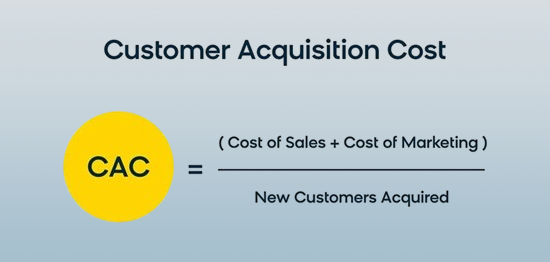In today’s competitive business landscape, effective marketing is not just about creative campaigns and catchy slogans; it’s also about maintaining healthy financial equations. In marketing, numbers play a crucial role. Balancing the costs and returns of marketing efforts is vital for sustainable growth and profitability.
Here, we explore the key components of healthy financial equations in marketing and how businesses can optimise their strategies for better economic outcomes.
Understanding Marketing ROI
Marketing Return on Investment (ROI) is a significant indicator for determining the efficacy of marketing campaigns. It enables firms to understand how much revenue is generated for every money spent on marketing. The formula for determining marketing ROI is:

A positive ROI indicates that the marketing efforts are generating more revenue than the costs incurred, while a negative ROI suggests the need for strategy reassessment. To achieve a healthy ROI, businesses must focus on targeted marketing, efficient budget allocation, and continuous performance monitoring.
Customer Acquisition Cost (CAC): Know Your Spend
Another critical equation is Customer Acquisition Cost (CAC). This measure helps companies understand how much it costs to acquire a new customer. The formula is:

Keeping CAC low while attracting high-quality customers is essential for a healthy bottom line.
Customer Lifetime Value (CLV): What’s a Customer Worth?
While CAC measures how much you spend, Customer Lifetime Value (CLV) tells you how much revenue a customer is likely to bring in over their entire relationship with your business.
The basic formula is:

By comparing CAC and CLV, companies can ensure they are investing in acquiring customers who will provide substantial returns over time.
Profit Margin: Know Your Profits
Finally, understanding profit margins is critical for a successful financial marketing strategy. Profit margin refers to how much profit a business makes from its sales. The formula is:

Monitoring profit margins helps businesses identify areas where costs can be reduced and efficiencies can be improved, ultimately leading to greater financial health and sustainability.
A higher profit margin means you’re keeping more money from your sales, which is a good sign.
Cost-Effective Marketing Strategies
Implementing cost-effective marketing strategies is crucial for maintaining healthy financial equations.

Here are some strategies to consider:
- Content Marketing: Creating valuable and relevant content can attract and engage customers without significant expenditure. Blogs, videos, and infographics are effective tools for content marketing.
- Social Media Marketing: Leveraging social media platforms for organic reach and engagement can be highly cost-effective. Paid social media campaigns can also be optimized for better ROI.
- Email Marketing: Properly tailored and targeted email campaigns can provide high returns at a low cost.
- Influencer Marketing: Collaborating with influencers can amplify brand reach and credibility at a fraction of the cost of traditional advertising.
By focusing on these cost-effective strategies, businesses can achieve significant marketing impact without overspending.
Measuring and Analyzing Performance
Continuous measurement and analysis of marketing performance are vital for maintaining healthy financial equations. Customer lifetime value (CLV), conversion rates, and customer acquisition cost (CAC) are examples of key performance indicators (KPIs) that shed light on how well marketing campaigns are working.

Google Analytics, CRM systems, and marketing automation platforms are all tools that can help you track key indicators.
Regular performance reviews enable businesses to identify successful strategies and areas for improvement. By analyzing data and making informed decisions, businesses can optimize their marketing efforts for better financial outcomes.
Sustaining Success Through Smart Marketing

In conclusion, maintaining healthy financial equations in marketing is not just about crunching numbers but about making informed, strategic decisions that drive sustainable growth. By understanding and optimizing key metrics like ROI, CAC, CLV, and profit margins, businesses can ensure their marketing efforts are both effective and efficient. Leveraging data-driven insights allows for more precise targeting and better resource allocation.
Ultimately, the synergy between financial insight and creative strategy is what propels businesses toward long-term success.

